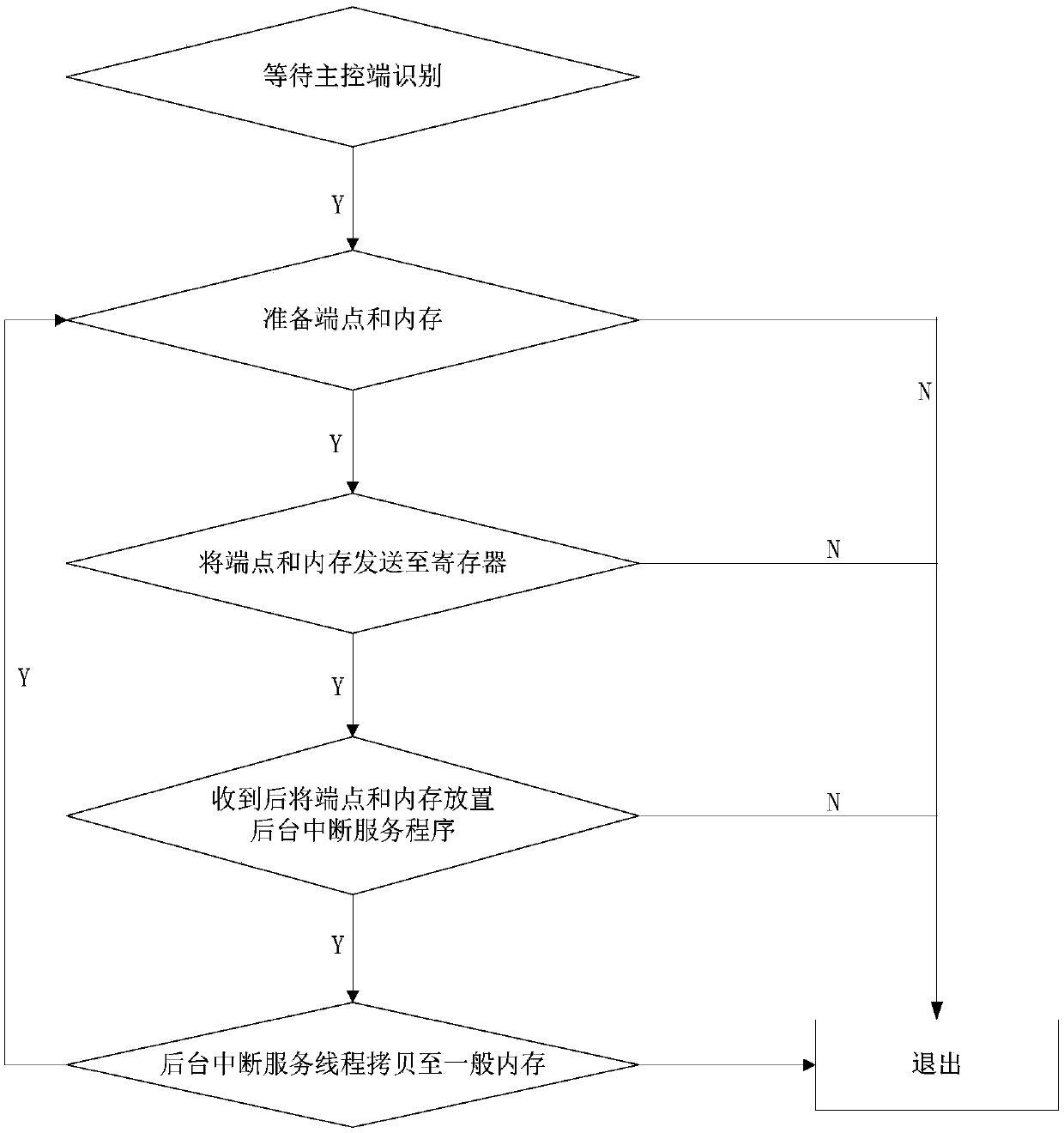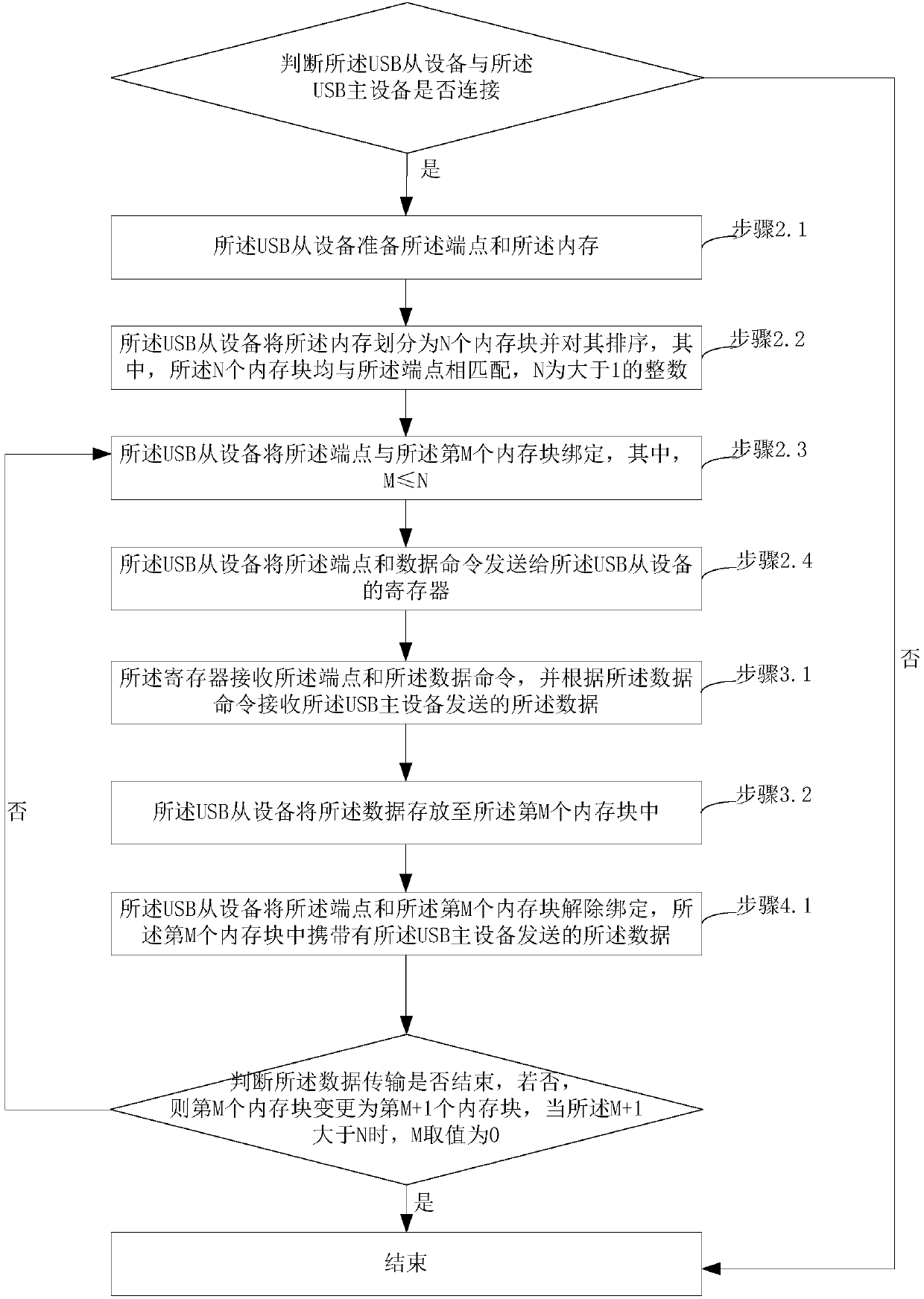Method for increasing reading speed of USB slave device
A technology of reading speed and equipment, which is applied in the field of data processing, can solve problems such as cost increase and data loss, and achieve the effect of increasing transmission speed and improving data transmission efficiency
- Summary
- Abstract
- Description
- Claims
- Application Information
AI Technical Summary
Problems solved by technology
Method used
Image
Examples
Embodiment 1
[0047] An embodiment of the present invention provides a method for increasing the reading speed of a USB slave device, which is applied to a system including a USB master device and a USB slave device, wherein the method includes:
[0048] Step 1, judging whether the USB slave device is connected to the USB master device, if connected, then perform step 2, if not connected, then end;
[0049] Step 2, the USB slave device binds the endpoint to a memory that matches the endpoint;
[0050] Step 3, the USB slave device receives the data sent by the USB master device, and stores the data in the memory bound to the endpoint;
[0051] Step 4. The USB slave device unbinds the memory from the endpoint. If the data transmission is not over, perform step 2 again until the data transmission is over.
[0052] Further, the step 1 includes:
[0053] The USB host device automatically detects the USB port;
[0054] If a USB slave device is detected, the USB slave device is connected to the...
Embodiment 2
[0074] Such as figure 2 as shown, figure 2 is a schematic flow chart of the method provided by the embodiment of the present invention. The embodiment of the present invention provides a method for improving the reading speed of the USB slave device, which is mainly applied in the data interaction process between the USB master device and the USB slave device, and the specific content is as follows:
[0075] Step 1, judging whether the USB slave device is connected to the USB master device, if connected, then perform step 2, if not connected, then end;
[0076] The specific judgment process is as follows:
[0077] The USB host automatically detects the USB port,
[0078] If a USB slave device is detected, the USB slave device is connected to the USB master device;
[0079] If not detected, not connected.
[0080] It should be noted that, in the embodiment of the present invention, after the USB slave device is detected, the following content is also included:
[0081] ...
PUM
 Login to View More
Login to View More Abstract
Description
Claims
Application Information
 Login to View More
Login to View More - R&D
- Intellectual Property
- Life Sciences
- Materials
- Tech Scout
- Unparalleled Data Quality
- Higher Quality Content
- 60% Fewer Hallucinations
Browse by: Latest US Patents, China's latest patents, Technical Efficacy Thesaurus, Application Domain, Technology Topic, Popular Technical Reports.
© 2025 PatSnap. All rights reserved.Legal|Privacy policy|Modern Slavery Act Transparency Statement|Sitemap|About US| Contact US: help@patsnap.com


